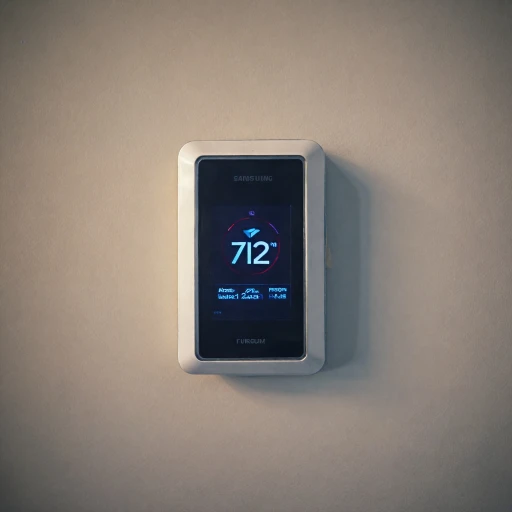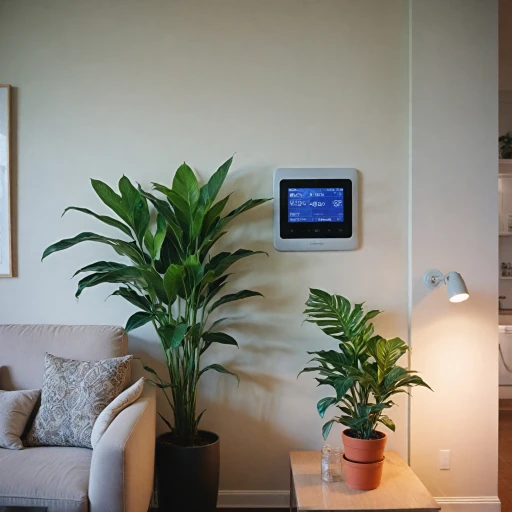Understanding Mitsubishi Mini Split Thermostats
Discovering the Features of Mitsubishi Mini Split Thermostats
Mitsubishi mini split thermostats offer an innovative solution for managing indoor temperatures, providing both comfort and energy efficiency. These thermostats serve as remote controllers for your heating and cooling systems, allowing you to seamlessly adjust the temperature with ease. One of the key components is the inclusion of a sensor that ensures accurate temperature readings. This allows the thermostat to make precise adjustments, maintaining a consistent environment within your space. By comparing different models, you can identify which unit best meets your specific needs, whether it’s heating, cooling, or a combination of both. In terms of installation, Mitsubishi thermostats are known for their flexibility and compatibility. Whether you're integrating a new system or upgrading an existing setup, the process is generally straightforward. Keep an eye out for detailed policy about specific requirements such as lift gate or curbside remote services if you're dealing with large units that require special shipping considerations. Mitsubishi mini split systems offer several advantages, including the ability to divide your home into different zones, each with its own thermostat control. This zoning capability can maximize energy efficiency, allowing you to control the temperature in individual rooms rather than wasting energy heating or cooling unused spaces. For more insights on how these systems enhance home comfort, a useful resource is this guide on line voltage smart thermostats.Installation Tips for Mitsubishi Mini Split Thermostats
Getting Started with Installation
Setting up a Mitsubishi Mini Split Thermostat can seem intimidating at first, but with a few simple steps, you can ensure your system operates efficiently. Here are some useful tips to help you through the installation process:
- Understanding the System: Before beginning installation, familiarize yourself with the components of your Mitsubishi thermostat. This includes the remote controller, sensor, and thermostat unit. Each plays a crucial role in regulating temperature and enhancing indoor comfort.
- Placement is Key: Mount the controller kit in a location where it can accurately measure the indoor temperature. Avoid placing it near heat sources or in direct sunlight as this may affect its performance. The goal is to ensure that the sensor accurately reflects the room’s temp.
- Connection Details: Make sure all connections are secure between the thermostat and the Mitsubishi mini split units. Proper wiring and setup can prevent issues that might arise during operation.
- Professional Assistance: If you're unsure about any aspect of the install, consider hiring a professional to apply full setup and configuration. This can save time and potential headaches down the road.
- Policy Details for Installation Services: Be aware of any specific shipping or service policies. For instance, full shipping and area surcharges might apply, and if the product requires ground curbside delivery or utilizes a lift gate lower policy, plan accordingly.
Once your Mitsubishi unit is properly installed, you’ll be well on your way to maximizing energy efficiency and integrating it with broader smart home systems. To further enhance your installation skills, explore more tips on smart thermostat comfort.
Maximizing Energy Efficiency
Optimizing for Enhanced Energy Use and Cost Efficiency
Integrating a Mitsubishi mini split thermostat can substantially optimize the energy efficiency of your HVAC units. To ensure you're getting the maximum benefit, consider these important details:- Temperature Settings: Utilizing the thermostat's remote feature, you can set different temperatures for various periods of the day. This not only enhances comfort but also reduces unnecessary energy consumption when the unit is not needed.
- Sensor Accuracy: The indoor sensor plays a crucial role in maintaining an accurate temperature reading, which in turn helps in adjusting the heat output effectively. Compare models to select the one that best matches your area.
- Smart Integration: Integration with smart home systems can further enhance energy efficiency. This setup allows for automated adjustments, learning from your habits over time. For more insights into optimizing smart thermostats, check this detailed review of advanced features.
- Placement: Ensure the controller kit is placed in an optimal location within the room to accurately gauge the temp, enabling the mini unit to regulate heating efficiently.
- Proper Installation: Follow installation guidelines carefully to ensure compatibility and optimal function. This not only applies to Mitsubishi units but also guarantees that no area surcharges apply due to installation errors.
Integrating with Smart Home Systems
Integrating Smart Home Ecosystems
Integrating your Mitsubishi mini split thermostat with smart home systems can substantially enhance control and automation capabilities, making it an integral part of your home environment.- Remote Control: By connecting to your home network, you can control the thermostat remotely with the Mitsubishi MHK remote or mobile app, allowing for adjustments from anywhere.
- Seamless Integration: These thermostats are adaptable for integration with popular platforms, making it possible to manage multiple devices simultaneously, including sensors and other units.
- Advanced Controllers: Consider pairing with an advanced controller kit for greater functionality. This allows the unit to interact more effectively with indoor and external conditions, optimizing temperature settings and heat distribution.
- Product Compatibility: Ensure the thermostat and sensor details match your existing smart home products, helping maintain system harmony.
Troubleshooting Common Issues
Troubleshooting and Maintenance: Keeping Your Thermostat in Top Condition
When it comes to troubleshooting Mitsubishi mini split thermostats, understanding common issues can save time and effort. Most problems are often related to connectivity, sensor inaccuracies, or external factors affecting the temperature settings.- Check Connectivity: Ensure that the remote and unit controller are functioning correctly. Verify that the batteries in the remote have charge and that wireless connections, if applicable, are stable.
- Sensor Accuracy: The sensor within the indoor unit should be free of dust and obstructions, as these can interfere with accurate temperature readings. Regular maintenance includes cleaning the sensor to ensure it uses the correct temp readings.
- Temperature Discrepancies: If you notice the temperature isn’t aligning with your settings, compare it with an external thermometer. This could indicate a need for recalibration of the thermostat.
- Delivery and Installation Affects: Units are often shipped semi truck for robust protection during transit. Ensuring proper installation without damaging internal sensors is crucial. For instance, incorrect installation may lead to issues such as the unit failing to regulate heat effectively.
- Energy Efficiency Checks: Regularly refer to your energy usage. If you experience a sudden spike, inspect to determine if the thermostat is malfunctioning or if there are changes in your usage patterns.
- Support and Policies: Always verify the product ground shipping details and apply full area surcharges if necessary, especially if you're in remote areas. Refer to the manufacturer’s policy details concerning maintenance tips or when to contact support.
User Experiences and Feedback
Understanding User Experiences and Feedback
Exploring user experiences and feedback for Mitsubishi Mini Split Thermostats can provide valuable insights into their functionality and performance. Users have noted numerous benefits as well as some challenges with these systems.- Comfort and Convenience: Many users appreciate the convenience of controlling the indoor temperature with a remote sensor. This feature allows adjustments without needing to be near the thermostat, providing ease of use.
- Installation Observations: While installation tips can greatly improve the ease of setting up the unit, some users have highlighted difficulties, especially when it comes to configuring the controller kit. Those who are not tech-savvy may need professional assistance.
- Energy Efficiency: Users commonly mention an improvement in energy consumption. However, optimal efficiency is often tied to proper setup and understanding of the unit's capabilities, particularly the sensor and controller functionalities.
- Integration with Other Systems: Successfully integrating the thermostat with existing smart home systems enhances usability. Users have shared positive experiences when units work seamlessly with other smart devices.
- Troubleshooting and Support: When issues arise, reliance on customer support or policy details becomes crucial. Feedback indicates that receiving timely assistance improves overall satisfaction.
- Shipping and Delivery: Feedback also touches on shipping experiences. Terms like full shipping, semi truck, and lift gate apply full meanings to the delivery expectations. Users should be aware of any remote area surcharges or curbside delivery policies that could affect delivery times.






